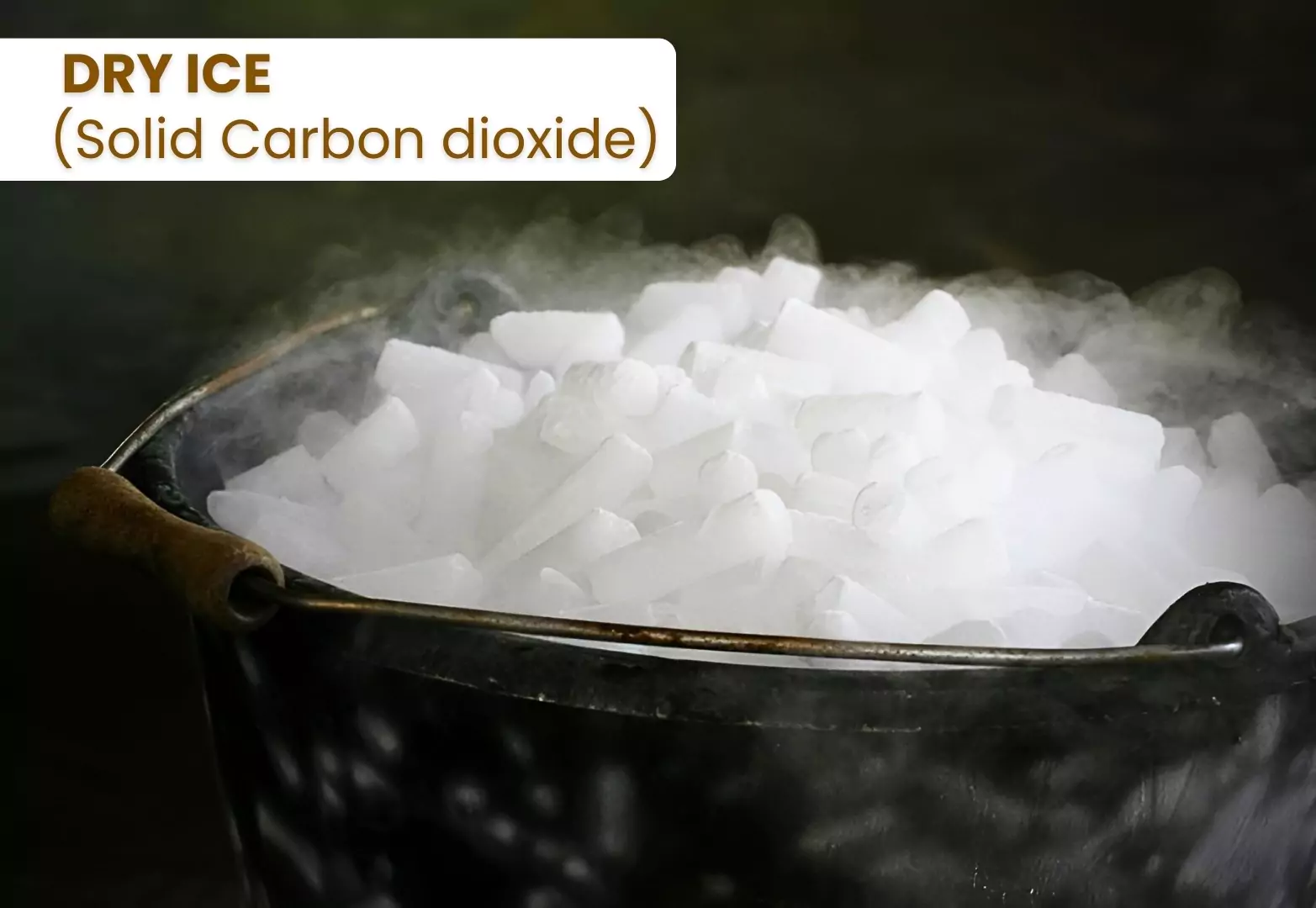Context:
Recently, at Gurugram restaurant, diners were mistakenly served ‘dry ice’ leading to severe health consequences.
What is Dry Ice?

- Definition: It is the solid form of carbon dioxide, commonly used as a cooling agent for food products like ice cream, frozen desserts etc.
- Dry Ice Formula: CO2
-
Properties of Dry Ice:
- Extreme Cold: It remains at extremely low temperatures, around -78.5 degrees Celsius (-109.3 degrees Fahrenheit).
- Sublimation: which enables it to transition straight from a solid to a gas without going through a liquid phase unlike regular ice.
- It is frequently used for food items that are needed to be cold or frozen, without the use of mechanical cooling.
-
Uses of Dry Ice:
-
- Food Industry:
- It’s employed for freezing at ultra-low temperatures, preserving food without water, and extending shelf life.
- Ex: in environments like aircraft lacking refrigeration systems, Popular in Restaurant & Bars.
- Medical and Pharmaceutical Applications: It is crucial in transporting and storing biological samples and medicines.
- Ideal for preserving pharmaceuticals like vaccines, maintaining their potency. .
- Transportation and Storage: Keep moisture-sensitive goods free from water during transportation and storage, as dry ice does not melt.
- Special Effects in other Fields:
- In Entertainment Photography, film, and theater leverage dry ice for special effects, utilizing its sublimation for visual impact.
- Fog and smoke machines enhance ambiance at parties or create eerie atmospheres for events like Halloween.
Safety Concerns and Risks
- Respiratory Issues: The accumulation of carbon dioxide in poorly ventilated areas can lead to oxygen deficiency, and increasing the risk of asphyxiation.
- Skin Hazards: The low temperature of dry ice may cause frostbite or cold burns if it comes into close contact with the skin.
Also Read: Global Initiative On Digital Health (GIDH)
News Source: DTE
![]() 5 Mar 2024
5 Mar 2024
